Armenian conversation basics are the core phrases and expressions that help you have simple, polite chats in Armenian. It’s more than swapping words from one language to another; it’s about showing cultural respect and connecting with people. Think of it as a small language kit that helps you handle daily life and build friendly ties in Armenia or with Armenian speakers anywhere.
Armenian is an old and special language with a 39-letter alphabet created by Mesrop Mashtots in the 5th century. While many people in Yerevan speak some English, going outside the capital-or wanting a closer connection-makes these basics very valuable. They help you bridge gaps, show real interest, and open the door to a warmer, more genuine experience.

Why learn Armenian conversation basics?
Learning even a few Armenian phrases can make your trip much better. Locals often react with joy when you try their language. It shows respect for their culture and leads to friendlier talks than using only English.
These basics are also very practical. Picture walking through a busy market where English isn’t common or asking for directions in a quiet neighborhood. Simple phrases become your lifeline: you can ask for help, buy things, and even join in the friendly bargaining culture many Armenians enjoy. It helps you get by and also makes your journey richer and more memorable.
Most common Armenian greetings and polite expressions
Greetings are a key part of Armenian manners. Saying hello kindly sets a good mood for any exchange. In Armenia, a small effort here shows respect and builds goodwill.
Armenian greetings vary by formality. Using the right one can make a big difference in how people see you. From casual to formal, these first words help you build rapport.
Common ways to say hello and goodbye in Armenian
For hello, the most common and flexible choice is “Barev” (Բարև) for informal settings. With elders, teachers, strangers, or groups, use the more formal “Barev dzez” (Բարև ձեզ). It means “Hello to you” and sounds respectful. It’s normal to greet everyone when you enter a shop, museum, or restaurant.
| English | Phrase (Armenian) | When to use |
|---|---|---|
| Hello (informal) | Barev (Բարև) | Friends, people you know |
| Hello (formal) | Barev dzez (Բարև ձեզ) | Elders, teachers, groups, strangers |
| Goodbye (formal) | Tstesutsyun! (Ցտեսություն!) | General polite farewell |
| Goodbye (informal) | Hajogh! (Հաջող!) | Friends, casual settings |
| Bye (very informal) | tsae! | Very casual |

“Tstesutsyun!” (Ցտեսություն!) means “till our next meeting” and feels warm. In casual moments, “Hajogh!” (Հաջող!) says “good luck” and sounds friendly. “tsae!” is even more informal. All these goodbyes carry warmth, reflecting local hospitality.
Key polite phrases to use in daily conversation
Beyond greetings, a few polite phrases will help a lot. “Thank you” is the most important. The formal word is “Shnorhakalutyun” (Շնորհակալություն). It looks long, but people will truly appreciate it. Many Armenians also say “merci” (from French) as a softer, casual “thanks,” and you can use it too. Reply with “Khndrem” (Խնդրե՛մ), meaning “You’re welcome.”
Other key phrases: “Ayo” (Այո՛) for “Yes” and “Voch” (Ո՛չ) for “No.” Colloquial versions are “ha” and “che.” To pass through a crowd or get attention, say “Neerhorutsun” (ne-rha-hut-sun) or informal “knerek” (k-ne-re-q) for “Excuse me.” If you bump into someone, “Tsavum em” (tsa-vum em) means “I am sorry.” These small words show courtesy and respect.
Introducing yourself and asking questions in Armenian
After greetings, the next step is to introduce yourself and learn about the other person. Armenians are friendly and enjoy it when visitors try their language. Sharing a little about yourself and asking simple questions can open doors to pleasant talks and deeper cultural moments.
Don’t worry about perfect pronunciation. The effort matters most and helps start new friendships and understanding.
How to introduce yourself in Armenian
Start with your name. “Im anunae…” (im anu-nae) means “My name is…,” as in “Im anunae John.” Then say “Hacheli e tsanotanal!” (Հաճելի է ծանոթանալ!) for “Pleased to meet you!” A shorter reply is “Հաճելի է” (Hacheli e), meaning “it’s nice.” To say “Likewise,” use “Pokhadardzabar” (Փոխադարձաբար:).
Next, say where you’re from: “Es…” (eess…) means “I am from….” For example, “Es Amerikatsi em” (Ես Ամերիկացի եմ:) or “Es Kanadayits em” (Ես Կանադայից եմ:). This often leads to more chat. On vacation? Say “Es ardzakurdum em” (Ես արձակուրդում եմ:).
Questions for getting to know someone
“How are you?” has formal and informal forms. Use “Inchpes ek?” (Ինչպե՞ս եք) for formal, and “Vonts es?” or “Inchpes es?” (Ինչպե՞ս ես:) for informal. A good reply is “Lav, shnorhakalutyun” (Լավ, շնորհակալություն), meaning “Fine, thank you.” To ask back, add “isk du?” (իսկ դու՞:).
Other useful questions: “What is your name?” is “Anooned inch eh?” or “Inchpes e ko anuny?” (Ինչպե՞ս է քո անունը:). “Where are you from?” is “Vorteghits es?” (Որտեղի՞ց ես:). “What do you do?” is “Inchov es zbaghvum?” (Ինչո՞վ ես զբաղվում։). “How old are you?” is “Kani tarekan es?” (Քանի՞ տարեկան ես:). These show real interest and help start friendly, memorable talks.
Counting and numbers in Armenian conversation
Numbers help with prices, quantities, and time. In Armenia, knowing basic numbers is very useful, especially in markets or stores. You may meet English speakers in Yerevan, but knowing Armenian numbers gives you more independence.
The number system is clear once you learn the base forms. Practice helps with daily needs and gives you a better feel for the language.
Basic numbers and counting in Armenian
Here are the numbers from zero to ten:
- 0: Tsrho (զրո)
- 1: Mek (մեկ)
- 2: Yerku (երկու)
- 3: Yerek (երեք)
- 4: Chors (չորս)
- 5: Hing (հինգ)
- 6: Vetz (վեց)
- 7: Yot (յոթ)
- 8: Oot (ութ)
- 9: Ine (իննը)
- 10: Tas (տասը)

From eleven to twenty, you usually combine “tas” (ten) with the single digit. For example, “tasnymek” (տասնմեկ) is eleven, and “tasnyerku” (տասներկու) is twelve. The tens go like this:
- 20: Ksan (քսան)
- 30: Yeresoon (երեսուն)
- 40: Karasoon (քառասուն)
- 50: Hisoon (հիսուն)
- 60: Vatsoon (վաթսուն)
- 70: Yotanasoon (յոթանասուն)
- 80: Ootsoon (ութսուն)
- 90: Inesoon (իննսուն)
For hundreds and thousands, use “Haryur” (հարյուր) for one hundred and “Hazar” (հազար) for one thousand. So 200 is “erkuharyur” (երկուհարյուր), and 2000 is “Yerku hazar” (երկու հազար). These help when asking “Es inch arje?” (How much is this?) or “Inchqan eh?” (How much does it cost?) at a market, so you can follow the reply and maybe bargain. In many traditional markets, the first price is often not the last one.
Practical Armenian phrases for travel and daily situations
Traveling in a new country is exciting, and a few local phrases can make a big difference. In Armenia, where hospitality runs deep, even small efforts to speak Armenian bring smoother talks and more smiles. These phrases help you handle common situations-from meals to finding your way.
English is more common in big cities like Yerevan, but smaller towns and villages show why these phrases matter. They help you connect with local life and make your trip feel more real.
Essential Armenian phrases for restaurants and bars
Food and drink are central in Armenia, so dining phrases are very handy. To ask for the menu, say “Menyun kbereq?” (men-yun kber-eq). Want dessert? Ask “deserti menyun kbereq?” When ordering, use “Khntromem” (kh-n-tro-mem) for “Please.”
For drinks, “Jhur” (jhur) is “Water.” “Gini” (gi-ni) is “Wine,” and Armenia has many, including fruit wines like pomegranate. When you’re ready to pay, ask “Hashiveh kbereq?” (ha-shiv-ek kbe-req) for “May I have the bill?” People often relax in cafés, so no need to rush, but these phrases help when you’re ready to leave.

Shopping and bargaining phrases in Armenian
Markets in Armenia are lively and often include friendly bargaining. The key question is “Inchqan eh?” (inch-qan eh) or “Es inch arje?” (Es inch arje?), both meaning “How much does it cost?” Don’t be surprised if prices move a bit in markets (but not in fixed-price stores).
After hearing a price, try “verjin ginn e?” (վերջին գինն է) for “Is that your final price?” You may also need signs like “Batz” (Open) and “Pak” (Closed). “Shop” is “Khanoot.” These exchanges are usually cheerful, and a little playful negotiation is welcome.
Asking for directions and getting around in Armenian
Finding your way can be hard, but a few phrases help a lot. Start with “Indz koqneq?” (indz koq-neq), meaning “Can you help me?” To ask “Where is…?” use “Oor eh?” For example, “Vortegh eh zoqaraneh?” (vort-egh eh zoo-qa-ra-neh) is “Where’s the bathroom?”
| Direction | Armenian |
|---|---|
| Turn right | Arch |
| Turn left | Dzakh |
| Straight ahead | Ughigh gnatsek! (Ուղիղ գնացե՛ք!) |
| Bus stop | Vortegh eh kangareh? (Where is the bus stop?) |
Looking for services? Try “Vortegh e aystegh motaka banky?” (Որտե՞ղ է այստեղ մոտակա բանկը:) to find the nearest bank. These phrases help you explore and get help from locals.
Common challenges and mistakes in Armenian conversations
Starting any new language brings some bumps, and Armenian is no different. The reward of speaking with locals is big, but you may face a few hurdles. Knowing common trouble spots helps you prepare, avoid stress, and learn faster.
Don’t let the unique parts scare you. Treat them as special features that make the language more fun. With some awareness and practice, you can handle these tricky parts well.
Frequent pronunciation difficulties
Armenian, a unique branch of the Indo-European family, uses sounds that may not exist in English. Some consonants come in pairs-aspirated and unaspirated-and that puff of air can change meaning. The language also has two “r” sounds: a trilled “r” (like Spanish “perro”) and a tapped “r” (like Spanish “pero”), written with different letters (Ռ ռ and Ր ր).

Vowels can be subtle too. For example, the letter Ե ե can sound like /jɛ/ (“ye” in “yes”) or /ɛ/ (“e” in “egg”). The best way to improve is active listening and repeating. Tools with audio, like phrasebooks with sound, are very helpful. Don’t hesitate to imitate native speakers; steady practice builds a natural accent.
Common misunderstandings to avoid
Formality matters. Armenian shows respect with the plural “you,” “դուք” (duk’), even for one person who is older or of higher status, like the French “vous.” Using the informal “դու” (du) in those cases can sound rude. Listen to how locals speak to guide your choice.
Loanwords also appear. Armenian is distinct but has borrowed from Russian, French, and Farsi. “merci” often replaces “Shnorhakalutyun” for “thank you,” and “Apteka” (from Russian) is common for “Pharmacy” along with “deghatoon.” In daily speech, the Russian form might show up more than the pure Armenian one. Knowing these borrowed words helps you follow along. Also, some phrases translate oddly word-for-word, so avoid literal translation in casual talk.
Tips for improving Armenian conversation skills
Learning a language takes time, and growing your Armenian conversation skills can be both useful and enjoyable. The key is steady practice and a willingness to speak. The more you surround yourself with the language, the more natural it feels, and the more you appreciate Armenian culture.
Every mistake teaches you something, and every small chat is progress. Keep going, and you’ll build real connections with people and places.
Best ways to practice speaking Armenian
The best way to get better is to speak. Look for chances to talk with native speakers. In Armenia, try a “Barev!” with shopkeepers, taxi drivers, or fellow travelers, then use the phrases you know. Many people will cheer you on and help with pronunciation.
Outside Armenia, visit Armenian community centers, join cultural events, or find language partners online. You can also narrate your day in Armenian or repeat phrases out loud to build confidence. A class or tutor gives structure and quick feedback. Envoy Tours, for example, hosts free “Learn Armenian in 1.5 hours” evening sessions at their Hostel-great for travelers. The more you use the language, the more fluent you’ll feel.
Using Armenian phrasebooks and resources
Phrasebooks are very handy, especially for travel. They give quick access to key words and phrases, often with phonetics to guide you. Choose ones with audio, like the “Talking Phrasebook Series,” which plays English first, then Armenian slowly, syllable by syllable, and then at normal speed. Hearing all three speeds helps with listening and pronunciation.
Digital tools also help. Language apps like Ling app offer full lessons on the alphabet, grammar basics, and tough words, with interactive practice. Blogs and articles on Armenian phrases add cultural context and new vocabulary. Use media too: listen to Armenian music, watch films with subtitles at first, and let the sound of the language sink in. Mixing structured study with real-life use brings the best results.
Interesting facts about Armenian and conversational culture
Armenian is not just a language; it’s a living link to a long, rich history tied closely to the people who speak it. Looking at a few fun facts about the language and how people speak day to day gives you a deeper appreciation for this lively heritage. Language reflects a nation’s path, values, and humor.
Learning these parts goes beyond vocabulary and grammar. It helps you feel the heart of Armenian communication so your talks become more meaningful.
Unique aspects of Armenian conversational etiquette
Armenian talk is warm, respectful, and expressive. A special word you’ll hear is “Jan” (Ջան). It shows tenderness and care and often comes after names, like “Armine jan.” People even use it with strangers to sound kind and open. Using “Jan” will surely be appreciated.
Another strong, loving phrase is “Tsavt Tanem” (Ցավդ տանեմ), roughly “let me take your pain.” While literal meaning may seem odd, it shows deep love and care and is used for people who truly matter to the speaker. Armenians also enjoy humor and often joke to make others comfortable. Many playful phrases appear in daily talk, like “Glukhs mi hardukir” (“Don’t iron my head,” meaning “you’re talking nonsense and it bores me”) or “Hogis durs ekav” (“My soul came out,” said when exhausted after a hard task). These sayings show a cheerful and strong spirit and add color to everyday speech. The language also has clear honorifics and uses the plural “you” (դուք – duk’) to show respect for elders or people of higher status, highlighting how respect shapes social life.



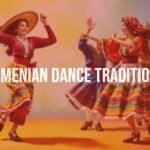

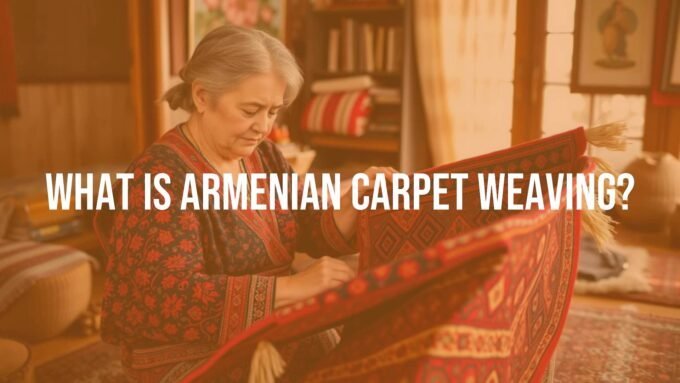



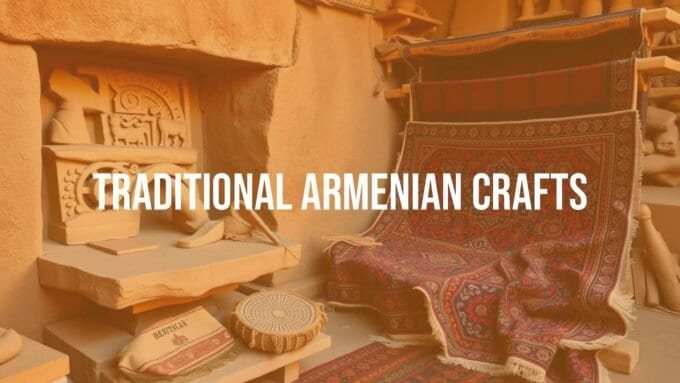
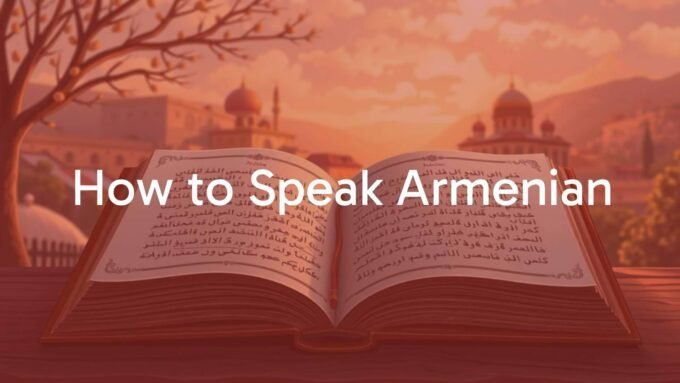

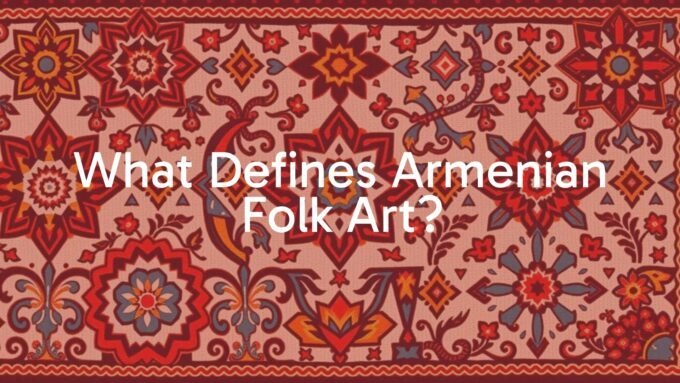

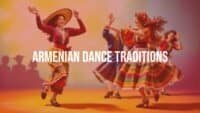

Leave a comment